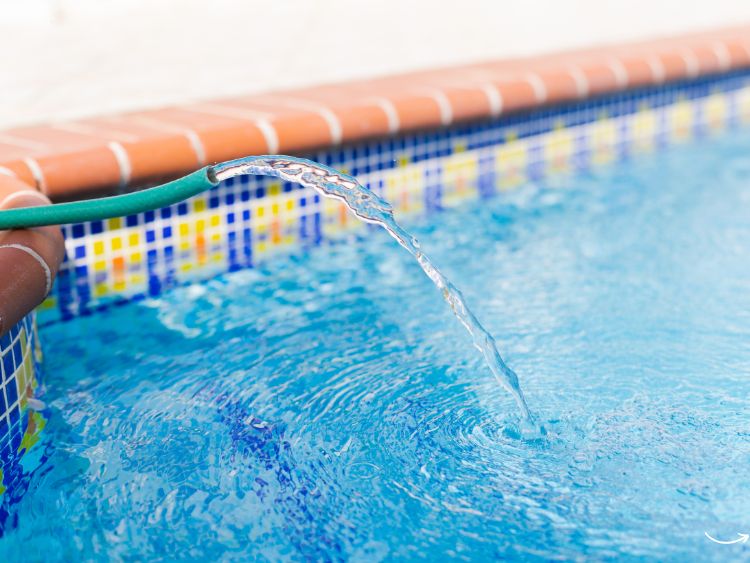Picture this: a hot summer day, the sun blazing in the sky, and you, lounging by your crystal-clear swimming pool, utterly relaxed. Now, what if I told you that keeping your pool in perfect condition could be almost effortless? That’s right, folks! With a salt chlorinator, maintaining your pool becomes a breeze. But, like all good things, it does require some TLC. Welcome to your comprehensive guide on salt chlorinator pool maintenance. We’ll dive into the nitty-gritty of keeping your pool pristine and inviting all year round. Ready to make a splash?
What is a Salt Chlorinator?
Before we dive into maintenance tips, let’s get a grasp on what a salt chlorinator is. A salt chlorinator is a device that converts salt into chlorine through a process called electrolysis. This means you no longer have to handle harsh chlorine chemicals directly. Instead, the system generates a steady, consistent amount of chlorine, ensuring your pool stays clean and clear.
How Does a Salt Chlorinator Work?
Here’s a quick rundown:
- Salt is Added to the Pool Water: You start by adding a specific amount of salt to your pool.
- Salt Cell Activation: The pool water passes through a salt cell, an essential component of the chlorinator.
- Electrolysis Process: Inside the cell, the salt is converted to chlorine gas, which dissolves into the water, becoming hypochlorous acid, the active sanitizer.
Isn’t it neat? This process keeps your pool water clean, reducing the need for traditional chlorine.
Why Choose a Salt Chlorinator?
Salt chlorinators offer several advantages:
- Lower Chemical Costs: You’ll spend less on chlorine and other chemicals.
- Softer Water: Salt-chlorinated water feels softer and less harsh on the skin and eyes.
- Consistent Chlorine Levels: Say goodbye to fluctuating chlorine levels.
Essential Salt Chlorinator Pool Maintenance Tips
Maintaining your salt chlorinator pool involves a few straightforward steps. Here’s how to keep everything running smoothly:
Regular Salt Level Checks
Salt levels are crucial for the chlorinator to function effectively. Generally, your pool’s salt level should be between 2,700 to 3,400 ppm (parts per million).
- Test the Water: Use salt test strips or a digital salt tester to check levels.
- Add Salt as Needed: If levels are low, add pool-grade salt according to your pool’s size and the manufacturer’s recommendations.
Cleaning the Salt Cell
The salt cell is the heart of the chlorinator, and it needs to be clean to work correctly.
- Inspect Regularly: Look for calcium buildup or scale on the cell.
- Clean When Necessary: Remove the cell and clean it using a solution of one part muriatic acid to four parts water. Soak the cell for 15 minutes, then rinse with fresh water.
Monitor Chlorine Levels
Even though the chlorinator generates chlorine, it’s essential to keep an eye on chlorine levels.
- Test Weekly: Use a pool test kit to ensure chlorine levels are between 1-3 ppm.
- Adjust Settings: If levels are off, adjust the chlorinator’s output settings as needed.
Check pH Levels
Salt chlorinators can cause pH levels to rise, which can lead to scaling and cloudy water.
- Test Frequently: Aim to test pH levels at least once a week.
- Adjust as Needed: Keep pH levels between 7.2 and 7.8. Use pH decreaser (muriatic acid) to lower the pH if it gets too high.
Regular Pool Maintenance
Routine pool maintenance complements the salt chlorinator’s work.
- Skim and Brush: Remove debris from the pool surface and brush the walls and floor to prevent algae buildup.
- Vacuum: Vacuum the pool weekly to remove dirt and sediment.
Winterizing Your Salt Chlorinator
If you live in a region with cold winters, you’ll need to winterize your salt chlorinator.
- Shut Down the System: Turn off and disconnect the chlorinator.
- Remove and Clean the Salt Cell: Clean and store the cell in a dry, warm place.
- Drain Water: Lower the pool water level below the skimmer and return lines.
FAQs
How Often Should I Add Salt to My Pool?
Typically, you only need to add salt at the start of the season and after heavy rain or significant water additions. Regular testing will help you determine when to add more.
Can I Use Regular Table Salt in My Pool?
Nope! Always use pool-grade salt, as regular table salt contains additives that can harm your pool and equipment.
Why is My Salt Cell Not Producing Chlorine?
If your salt cell isn’t producing chlorine, it could be due to low salt levels, a dirty cell, or a malfunctioning cell. Check and address these issues first.
How Long Do Salt Cells Last?
Salt cells typically last 3-7 years, depending on usage and maintenance. Regular cleaning can extend the cell’s life.
Is a Salt Chlorinator Pool Completely Maintenance-Free?
While salt chlorinators reduce the amount of manual chlorine handling, they still require regular maintenance like cleaning the salt cell, monitoring salt levels, and balancing pool chemistry.
Summary
Maintaining a salt chlorinator pool is straightforward, but it requires regular attention to detail. By keeping an eye on salt levels, cleaning the salt cell, and monitoring your pool’s chemical balance, you can enjoy a pristine swimming experience with minimal hassle. So, take the plunge and keep your salt chlorinator pool in tip-top shape. Happy swimming!
Authoritative Links
- https://www.pooloperationmanagement.com
- https://www.swimmingpool.com
- https://www.troublefreepool.com
Remember, regular maintenance ensures your pool remains a safe and enjoyable oasis for you and your family. Cheers to clear waters and sunny days!







